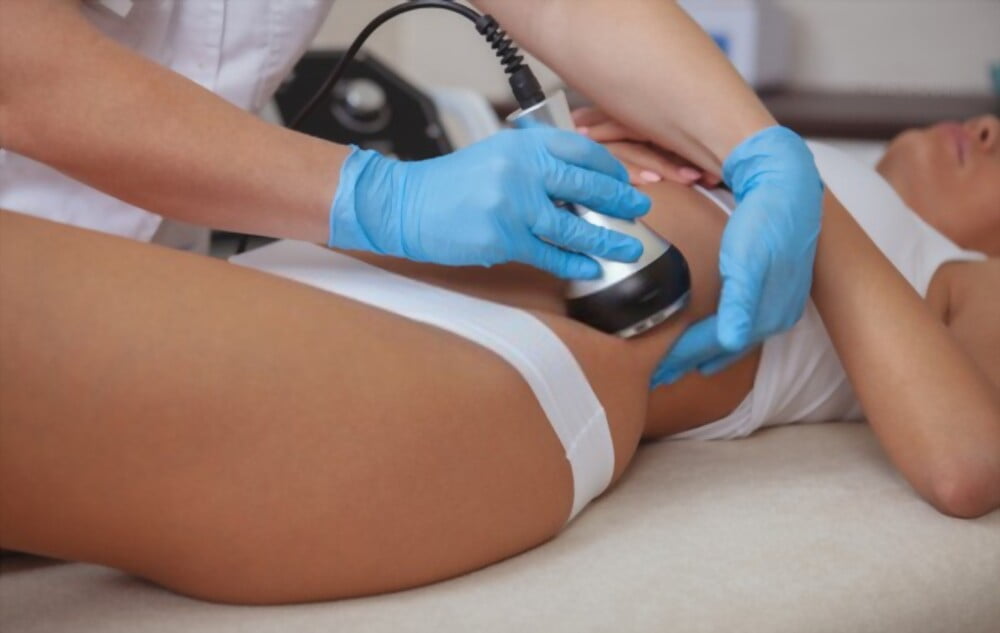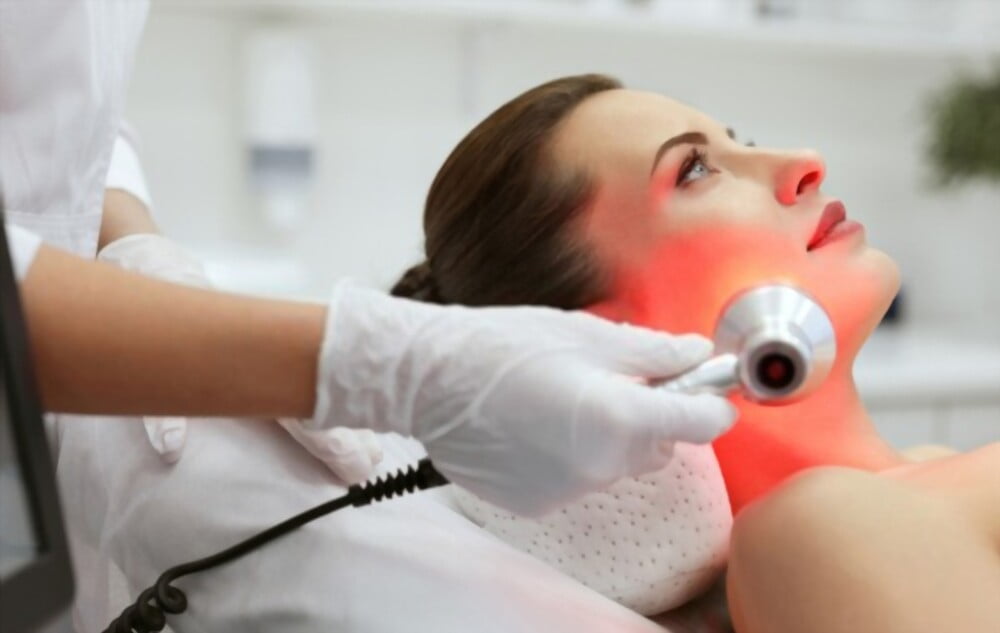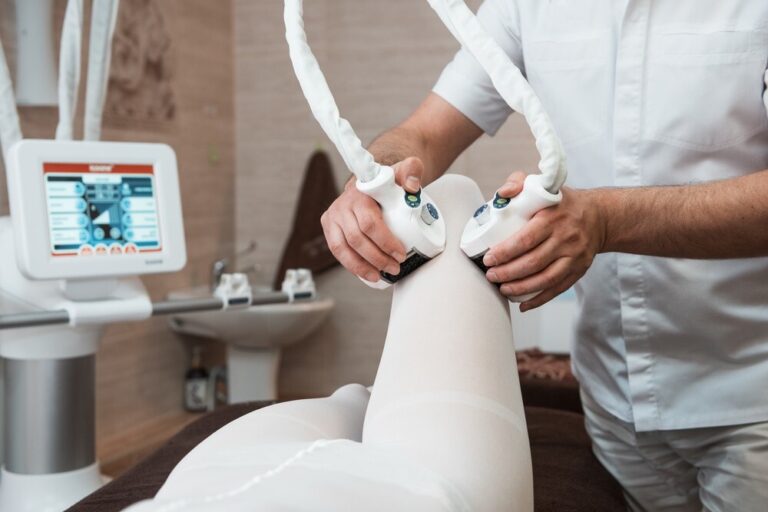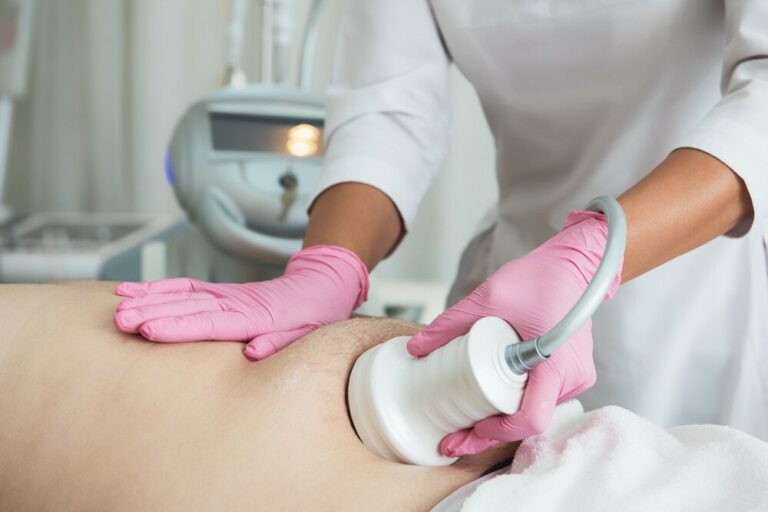Does Ultrasonic Cavitation Tighten Skin?
Many of us are enchanted by the thought of Stubborn Fat removal without surgery. There is one way to do this: Ultrasonic Cavitation( another option is cool-sculpting)
But of course, you might ask what other benefits this procedure has?
Does Ultrasonic Cavitation Tighten Skin? The direct answer is "no." Ultrasonic Cavitation doesn't tighten skin. It is utilized for a different objective, to expel fat beneath the skin.
To continue clarifying why the procedure does not do this, let’s take a closer look at what ultrasonic cavitation does to the body.
We’ll talk about why some people think ultrasound treatments can tighten skin. Let’s get started.
What is Ultrasonic Cavitation Treatment?

Ultrasonic cavitation is a body contouring treatment that can help remove fat deposits from your skin.
This procedure, in comparison to more invasive options like liposuction, is safer. Ultrasonic waves are a new way to treat fat cells with an innovative technique.
The waves break down the cells, which are then absorbed by your body's lymphatic system.
Ultrasonic cavitation is unique because it doesn’t require any incision. It’s similar to ultrasound liposuction in that they both use sound waves for energy.
This means recovery is easier. It also means that results might be less noticeable.
Ultrasound cavitation is a safe alternative for people who want to meet their body goals without invasive treatments.
What Does Ultrasonic Cavitation Do?

Ultrasonic cavitation targets fat under the skin and get it out by using ultrasound technology.
This allows the fatty tissues near the fat deposit site to be broken down due to exposure to ultrasound. Yet, other areas of the body, such as the skin, are not affected by it.
When fat deposits are broken up, they will be reabsorbed by the body and converted to energy. The excess will be expelled out of the body.
Some toxins may also be eliminated along the process.
Many people like this procedure because it doesn’t require any incision. Some people might feel discomfort from the buzzing of the machine. However, it is not painful.
Patients can sense the heat, but the heat source's temperature isn't hot enough to produce collagen, which could help with skin tightening.
It can be done at a medical spa, but it’s also possible to do it in the privacy of your own home. All these elements contribute to the significant allure.
Does Ultrasonic Cavitation Tighten Skin?

Ultrasonic cavitation cannot tighten skin. It is used for fat removal and not tightening. Ultrasound may be too weak to produce collagen. However, it can loosen the tissues of the skin after the fat is removed.
The heat produced during the treatment isn't enough to heat the tissues that produce collagen.
Some people may not know that ultrasonic cavitation is a different procedure. They may confuse ultrasonic cavitation with other procedures that use a similar technology to tighten skin.
A procedure of one such kind is called Ultherapy. Likewise, Radio Frequency Skin is Tightening as well.
Ultrasonic cavitation, RF Skin tightening, and Ultherapy are three different technologies that use sound waves to create a tightening effect.
In addition, they have different targets, frequencies, and usages.
In ultrasonic cavitation, the idea is to liquefy the fat so that it can be extracted.
Treatment is typically used on parts of the body.
Ultherapy targets the more basal layers of skin. This is where collagen is usually generated. Firm, wrinkle-free skin can be achieved by stimulating the production of collagen and elastin.
This makes the skin tighter. It is usually done on the face.
How Can You Tighten Skin?

Skin is naturally elastic; it would tighten if there were no demand for stretching. IF you have lost fat, the skin will gradually tighten with the help of collagen and elastin.
These two substances assist with firmness and sagginess.
As people get older, their body produces less collagen and elastin. This decrease in production is natural and normal.
This is why the skin of a younger woman looks tighter than an older one.
You can stimulate the skin to produce more collagen by applying a variety of techniques, such as the following:
1. Improve Your Diet

Diet is an aspect that you can control. Having enough nutrients can help produce collagen and prevent wrinkles.
Your body needs proteins that are present in foods high in protein. Milk, meat, seafood, poultry, eggs and many others are good sources of protein.
Lipids are also necessary for the production of collagen, so energy must be provided.
Also, make sure that your daily diet contains foods rich in Vitamin C. Vitamin C can be found in citrus fruits and many vegetables like broccoli and cabbage.
2. Take Collagen Supplements

Collagen is what makes up the muscles in your face. When collagen is produced, they are then able to work well and look better.
This is why collagen supplements or products such as Restylane help increase collagen production by making it easier for the skin to produce it.
Collagen supplements can be found in drug stores and medical salons that provide cosmetic procedures.
3. LED Red Light Therapy

This is one of the first treatments that medical professionals turn to when they’ve tried everything else.
Red light therapy is a treatment that uses red light to reach the body's cells. Fibroblasts are cells that produce collagen and elastin.
When the cells are stimulated, they use up energy. This causes the production of collagen and elastin to increase. This helps plump up and tighten the skin.
4. Ultherapy

Ultherapy uses ultrasound to stimulate collagen production to tighten skin. It is an FDA-approved process. It can be performed in the home. It is safe, and people often have no issues with it.
Fat cells are found throughout different parts of your body. Overweight people have more fat cells than skinny people.
This is not always the case if you are young. As people get older, they produce less collagen and elastin.
There will be more dryness in their skin, and they will develop crow's feet lines, sagging skin, and wrinkles more easily.
Ultherapy can help restore harmony to your body’s composition by helping add more collagen to your skin while at the same time reducing the fat deposits in other areas of your body.
Ultherapy is a non-invasive procedure that uses ultrasound technology to stimulate collagen production and tighten skin.
5. Radio Frequency Skin Treatments

This procedure uses radiofrequency to improve the skin. Radiofrequency may help with wrinkles and lines, uneven skin tone, acne scars, sagging skin, stretch marks, and hair removal. This is why it is used for fat reduction as well.
It increases collagen and elastin production, which can help reduce the effects of aging on your skin. It may treat cellulite and stretch marks in the process.
6. Laser Skin Tightening

Similar to red light therapy, laser treatments also work with light energy. While lasers are more powerful, light therapy devices use much lower energy. This intense beam of light directed to the skin might cause a controlled injury on skin.
The Tria Smooth Beauty Laser is an excellent example of one such device.
With it, the skin is, in effect, forced to renew with new cells. Light from lasers also reaches the deeper layers of skin. The warmth will also initiate the production of collagen.
7. Collagen Injection Or Dermal Fillers

The procedure will produce additional collagen in the epidermis. Bovine collagen is like the collagen that our body produces. For some, animal products are not the preference.
As an alternative, some choose to inject dermal fillers that contain hyaluronic acid.
Hyaluronic acid is a substance that can hold water while also providing support for the skin.
When it is present, it can also stimulate collagen production.
8. Microdermabrasion

You can induce the production of collagen with Micro Needling. With this process, minor and superficial wounds are created upon the skin.
Wounds naturally produce collagen to help the body heal. This method helps to tighten the skin as well as improving its texture.
They are also used by those with acne, pigmentation, melasma, and stretch marks.
9. Ultrasonic Fat Burners

Ultrasonic Fat Burners are a collective effort to join together different product categories into one machine.
This device combines ultrasonic cavitation, light therapy, and other methods into one system.
They are not excellent at any one thing, but their combination makes them an intriguing option!
Conclusion

Ultrasonic cavitation liquefies the fats in your body so that they can be removed.
It isn’t used to tighten the skin.
However, other procedures can be combined with it so that the fat can be removed and the skin can be tightened.
Ultrasonic cavitation may be confused with another procedure that uses ultrasound technology to tighten the skin. While the two are different procedures or approaches, they will yield different results.





